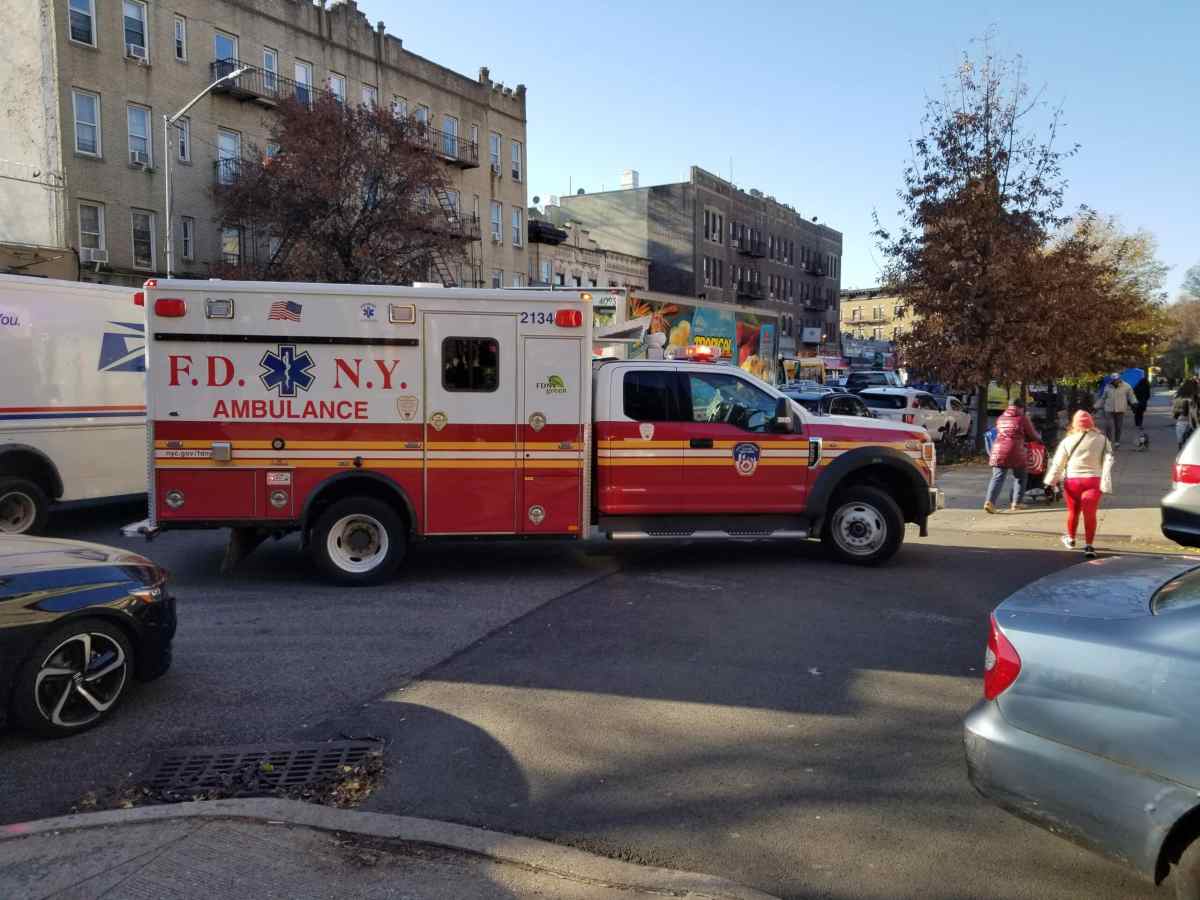They’re doing more with less, even with lives on the line.
New data reveals a relative decline in funding for EMS workers within the FDNY, despite the medical professionals seeing a stark rise in calls for “life-threatening” emergencies across the Big Apple.
Last year alone, New York City EMS responded to a total of 611,443 “Segment 1-3 calls” — which relate to medical emergencies like choking, cardiac arrest, stroke, gunshot wounds, and other severely traumatic situations.
Comparing data from 2021 and 2023, the study shows that all five boroughs saw a notable increase in “life-threatening” emergencies over those two years — with Brooklyn leading the way at a 15.7% hike, landing at 176,284 such calls in 2023.
Meanwhile, the Bronx followed closely behind, jumping from 126,826 life-threatening calls in 2021 to 146,179 calls in 2023 — marking a 15.3% decline.
Manhattan saw a the third biggest increase with 12.8%, followed by Queens at 10.7%, with Staten Island showing the smallest hike at just 8%
Still, with every borough seeing an uptick in those calls, the union representing many EMTs and paramedics in the city says the relative amount of money being spent on those emergency services has remained steady, or even declined.
According to a recent report from the mayor’s office, the FDNY EMS division actually has less ambulances on the road (461) than they did in 2021 (216) — marking an 11% decline.
That, according to EMS insiders, has led callers seeking medical assistance to wait around 1 minute, 9 seconds longer than two years ago per emergency, when the department had more resources and response times were shorter.
To better deal with those emergencies, and to compensate the EMS workers fairly for the life-saving work they do, the city must spend a greater percentage of the total FDNY budget on its medical personnel,” said Oren Barzilay, the union president at FDNY EMS Local 2507, which represents many EMS workers.
“Spending on EMS has been flat for years, including poverty wages, coupled with a lack of resources that has had a notable, detrimental effect on our members,” Barzilay added. “The FDNY is an over $2.35 billion agency, yet the allocation it commits for EMS spending is a ridiculously low one-sixth of that.”
Of the total $2.351 billion FDNY budget in FY20223, the allocation for the EMS Division sat around $383.2 million, the sport shows.
According to Barzilay, the past few years have been the busiest in their history, but the total headcount for EMS workers has remained stagnant.
“We are the busiest emergency medical response agency in the world, and busier than ever saving the lives of our fellow New Yorkers, but our pleas for help are continually ignored,” said Barzilay. “The latest Mayor’s Management Report spotlights the FDNY’s extreme concern with diversity, equity, and inclusion — but if the department truly intended to address this issue internally, they would be focused on paying living wages and fair treatment to the mostly female and minority staff of the FDNY EMS, responsible for 1.62 million emergencies.”
Making matters worse, Barzilay said, the lack of adequate funding leads seasoned professionals atop the EMS to leave the agency — causing a “brain drain” of top talent.
In 2023, FDNY EMS had a headcount of 4,036 EMTs and paramedics, but the agency was seeing a continual attrition rate of 30% after 3 years and 50% after 5 years, as some of the most experienced workers leave, only to be replaced on the job by less-knowledgeable individuals.
“New York’s street doctors work miracles, protect lives, but exist on poverty wages of only $18.94 hour, a wage that is cruel and inequitable for these skilled medical professionals,” said Barzilay. “It explains why job turnover surpasses 50 percent after five years on the job.”
amNewYork Metro has reached out the FDNY for comment on this story, and is waiting to hear back.
































